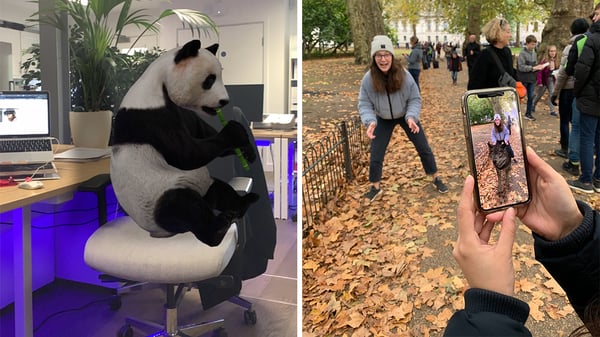Watch out for Experiential Marketing
Once the exception, now the rule, experiential marketing is essential for brands trying to innovate and find new ways to connect with their audiences.
- Brands are pulling out all the stops, from retailers creating museum-like interactive spaces to games companies creating live-action immersive versions of video games, experiential marketing is growing and evolving.
- While it appears B2C companies are immersing themselves in the power of these experiences to create lasting consumer relationships, B2B companies have also recognised its value and the opportunity it provides to connect with buyers in a more memorable way.
- Below, we will summarise three key experiential marketing trends that marketers need to be aware of for the new decade.
A brand is so much more than a name, design or symbol that identifies a company’s product or service apart from other sellers. A brand has a story, personality and is developed through relationships and these are primarily based on experiences that consumers have with that brand. This is where experiential marketing comes in…
1. AR and VR
Augmented reality (AR) and virtual reality (VR) are used by gamers, designers and now even some companies are using it for training purposes. The main benefit of these technologies and what makes it more attractive for experiential marketing is that it allows people to imagine possibilities they may not otherwise be able to experience while doing so in a safe simulated environment.
AR and VR provide a new way to experience the world and so, make an excellent vehicle for brands to create a unique, shareable and meaningful experience that will set them apart from the competition.
A great example of a brand testing the AR waters is Ikea with its AR app, Ikea Place, which helps customers visualise what furniture items would look like in their living room, or any other location they might desire - even the street. This allows consumers to design and make purchase decisions using their phones, this service provides ease on the purchase journey while making the experience fun, memorable and most importantly, shareable.
It’s AR of the tiger!
— Google (@Google) May 31, 2019
If you’ve got an AR-enabled phone, you can now bring select animals right into your space for a safari (or safe snuggle) with Search. pic.twitter.com/kWpudETgeq
Last year, tech giant Google released a game changer for Search in the form of an AR animal immersed in the real world. Placing AR as a feature of Search is part of Google’s belief that the,
“easiest way to wrap your head around new information is to see it. For example, it’s one thing to read that a great white shark can be 18 feet long. It’s another to see it up close in relation to the things around you.”
Google has future plans to partner with NASA, Samsung, Volvo and others to develop third-party content using this feature. The success of experiential marketing can again be seen here as they are providing consumers with a unique and shareable experience that they can take wherever they like, even some of the CLICKON staff enjoyed experimenting in St. James’ Park and the office.

2. Pop-ups and Transformation
Pop-ups and transformation are experiential marketing methods that are being used increasingly by brands, they are a type of promotional stunt that offers consumers with an immersive and shareable experience which in return, will generate conversation, traffic, engagement and when done correctly, sales.
A recent brand that took on this method during the Stranger Things season three buzz was Coca-Cola with its pop-up arcade in Shoreditch, London. The event only ran for one day and was in conjunction with the release of the third season on Netflix, which not only created the most sought out shareable experience, but it added a level of exclusivity to the lucky fans that were available that day. Limiting the pop-up to just one day did not, however, limit its prominence on social media and viewers were all desperate to get their very own limited-edition upside-down Coca-Cola x Stranger Things can.
3. Challenge
From the bottle-flipping challenge to the cinnamon challenge, people are coming up with more outrageous tasks that get a wide variety of people involved and sharing their experience. While taking part in these challenges may appear gimmicky, they are ubiquitous and are a sure way to get participants engaged. Another notable benefit is that as far as marketing efforts go, this is fairly inexpensive, creativity and resourcefulness are key.
A memorable and timeless challenge is ‘Movember’, a movement that has become so influential that in November 2018, £10 million was raised in the United Kingdom alone, with 73.2% of funds allocated to men’s health projects. The challenge has been going on for 16 years with a total of £598 million raised for men’s health.
The developments in technology have altered the way brands and consumers experience things, and in turn, increased our expectations of these experiences. This is where experiential marketing comes into play, unique and shareable experiences will be a common goal for brands to provide their consumers in the decade, with the most creative and resourceful coming out on top.
